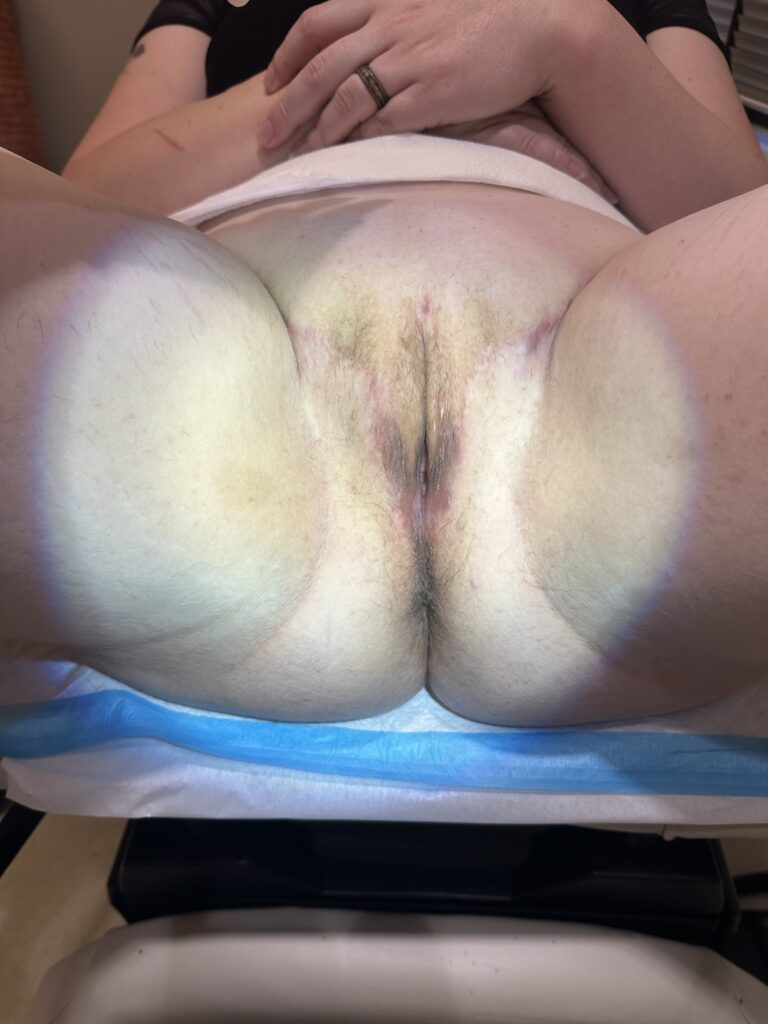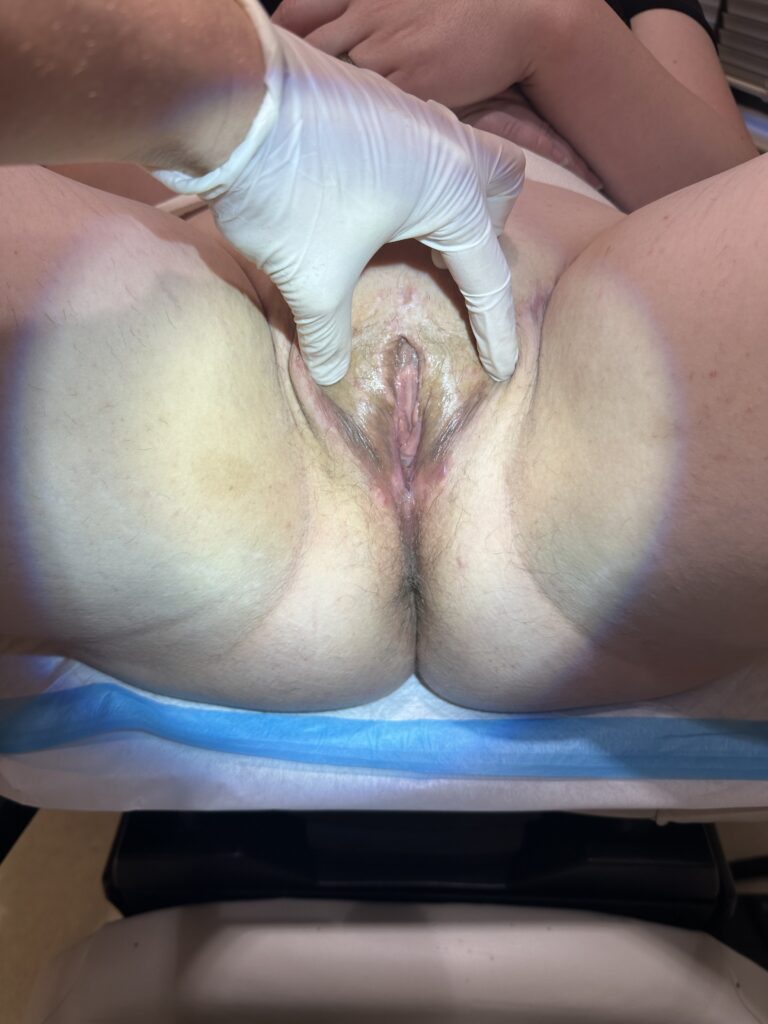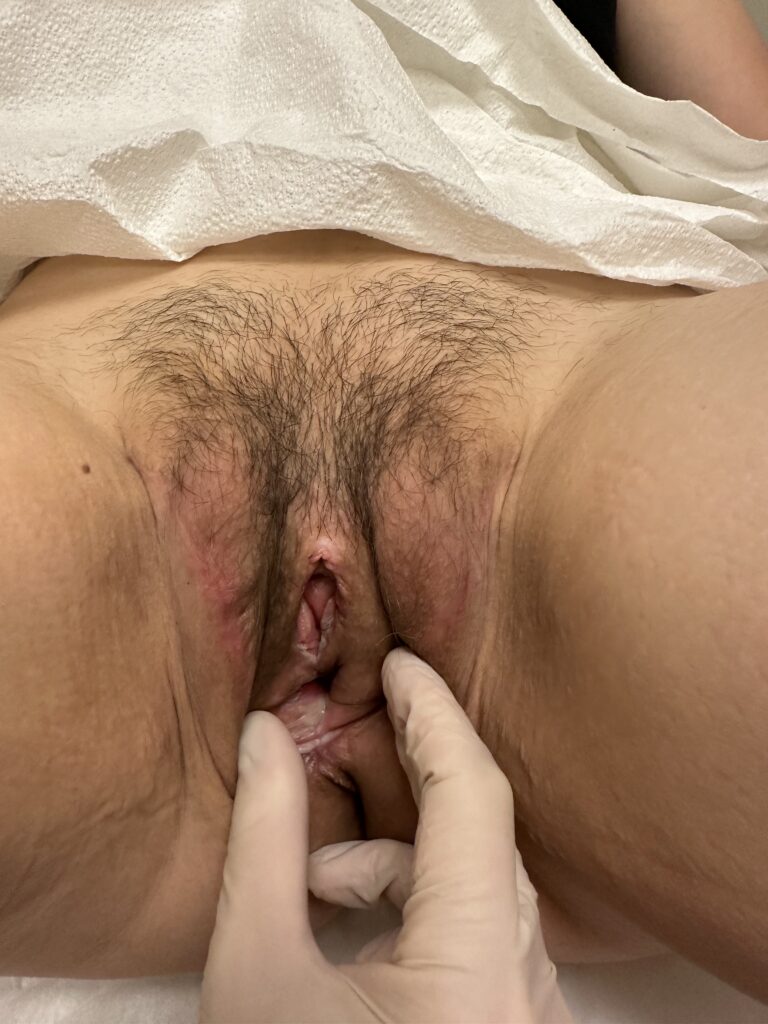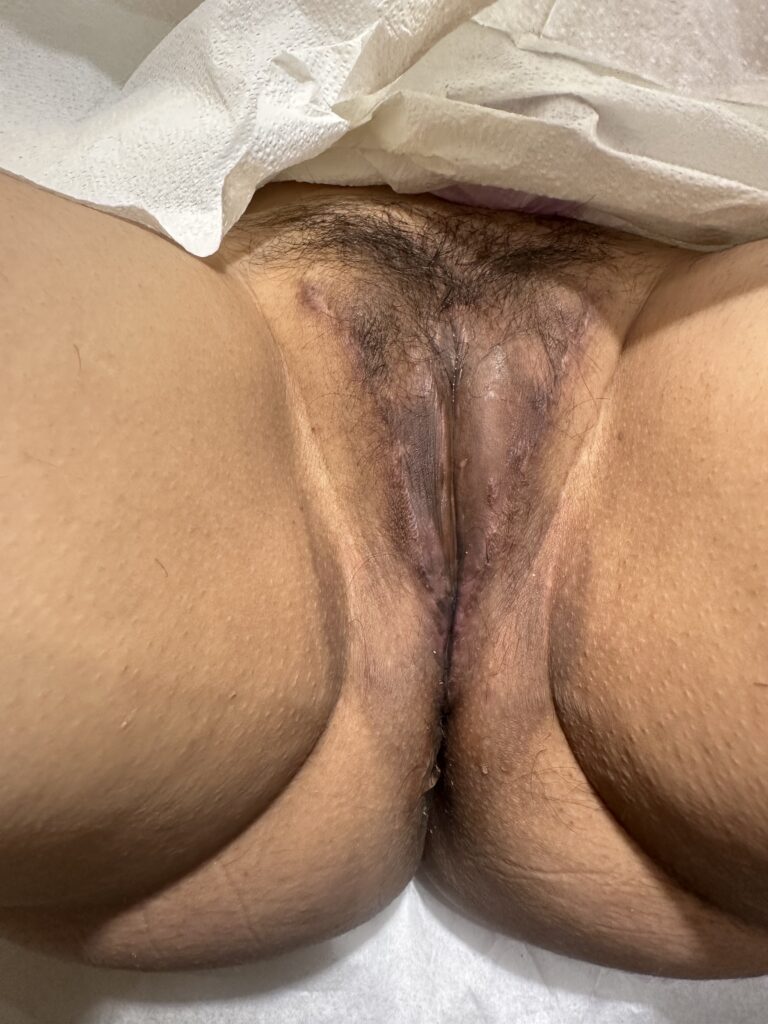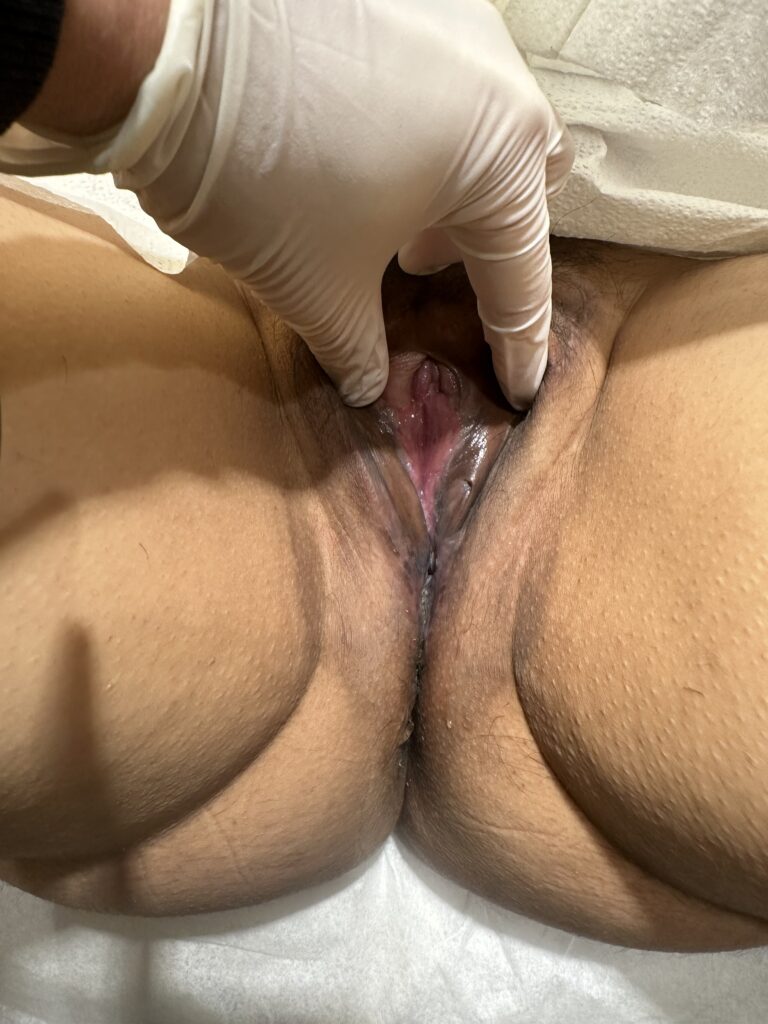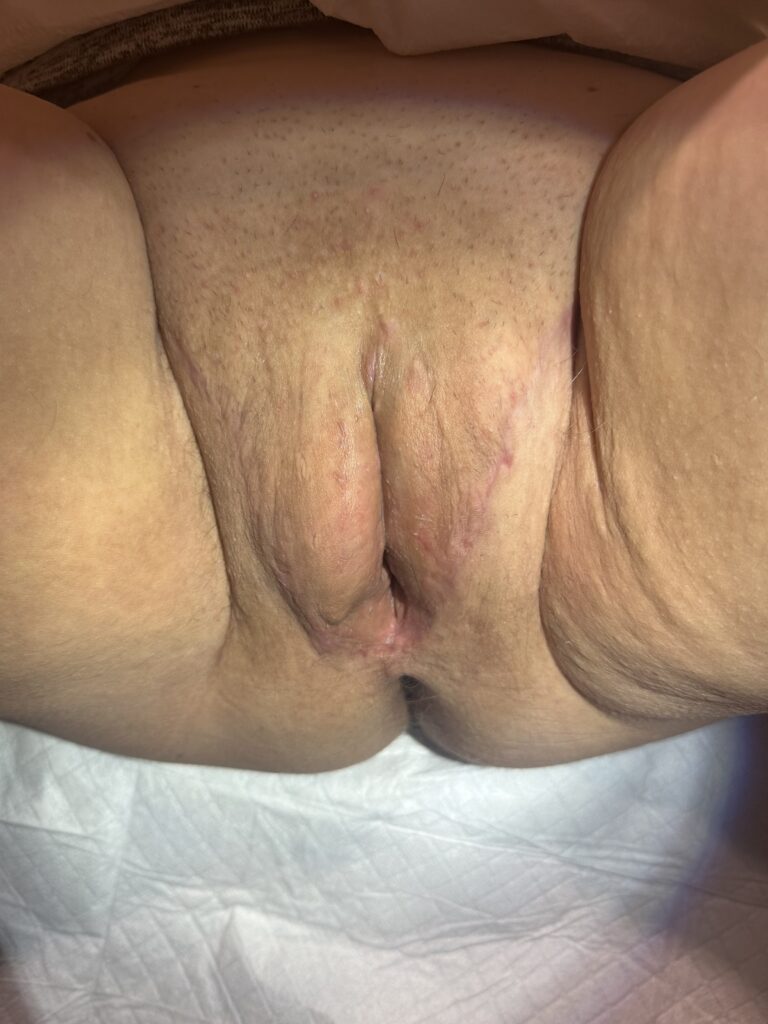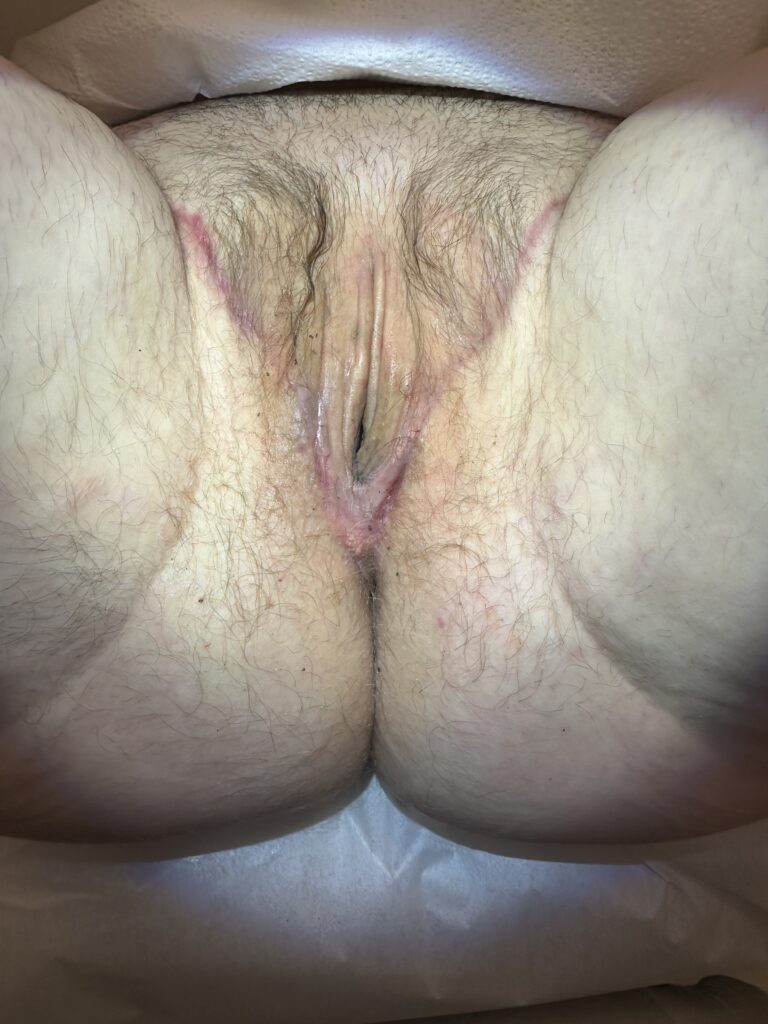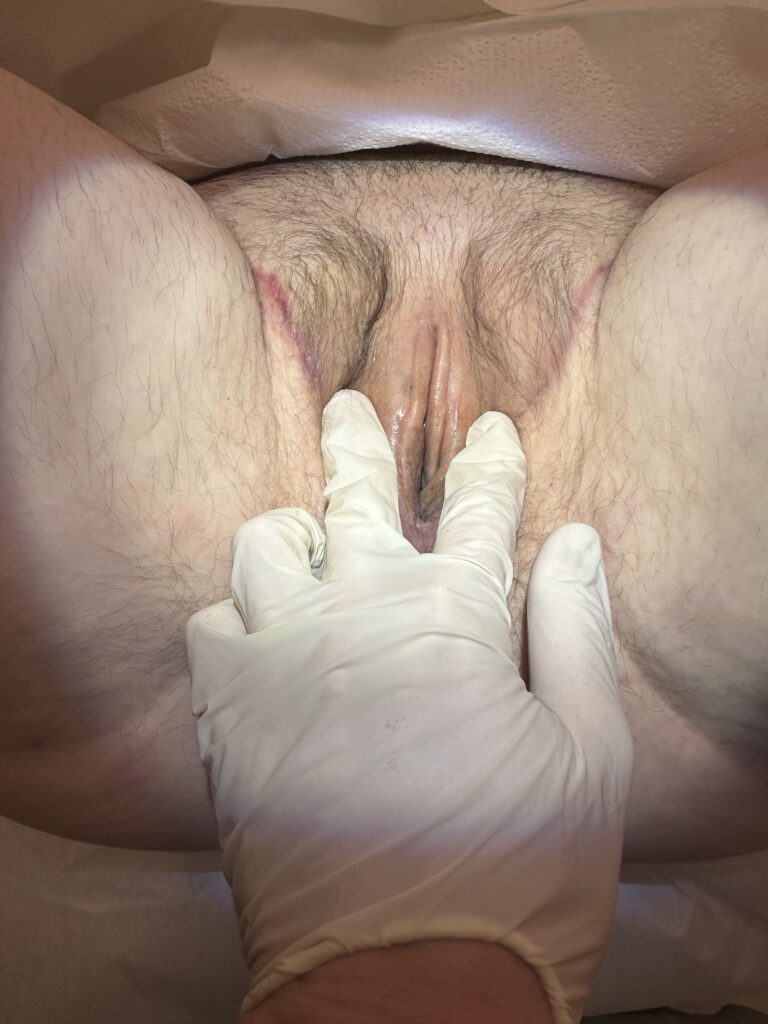
Vaginoplasty

What is vaginoplasty?
Vaginoplasty is usually a single surgery where tissue is rearranged to create a vulva or the outside portions of the vagina, clitoris, female positioned urethra as well as a vaginal canal.
Vaginoplasty in ideal circumstances, can enable you to:
· Have a body that more closely aligns with your gender.
· Have a natural-looking vagina with erotic sensation.
· Have penetrative intercourse with g-spot
Each patient’s surgery and results are different as everyone starts with unique anatomy.
What to consider
Before your first consultation, we encourage you to:
· Consider your goals and priorities of surgery.
· Write down your questions and bring them with you to your visit.
· Think about whether you want biological children in the future so we can discuss fertility preservation options. If you are thinking of preserving sperm, consider Fellow. Produce your sample in the convenience of your own home and mail it back for analysis and cryopreservation. Email us if you have any questions or would like to order a kit from our office.
· Ask a support person to come with you. Ideally, this is the same person who will care for you after surgery.
Your first consultation
Your first consultation is an opportunity for us to learn about your hopes and goals. You will be given a questionnaire to help us meet your needs and measure the results. Your surgeon will review options and explain the process.
Once we understand your goals, we will:
• Evaluate your anatomy. We determine the best option bases on tissue available and to look at hair clearance if you have had previous hair removal sessions
• Do a brief genital exam
• Assess your overall health to see which surgeries can meet your goals. You may be asked to lose weight or make lifestyle changes to prepare your body for surgery.
A fair amount of time is spent during the consultation with your surgeon, but you may also meet the other members of your care team. When team members introduce themselves, they will discuss their role in your care and answer your questions.
Vaginoplasty options
Penile inversion vaginoplasty:
• The majority of our patients have enough tissue for this technique
• Tissue is rearranged to make a full labia majora with defined labia minora as well as a sensate clitoris with protective hooding. Vaginal canal with adequate depth and girth for penetrative intercourse.
• This is considered to be a two-step surgery. In our hands the great majority of patients are happy after one surgery. Occasionally patient will request a small revision to improve aesthetics.
Penile inversion vaginoplasty with additional graft:
• External surgery is the same as above
• In cases where there is not enough tissue available to line a full depth vagina, we may discuss options for additional graft. This may include using tunica vaginalis which is peritoneum that is discarded with removal of the testicles, peritoneum harvested from the abdomen, additional skin graft usually from groin or abdomen, or skin substitute.
Zero depth, minimal depth, or vulvoplasty
• While nearly all of our patients choose to have a vaginal canal, this may not be desired by all
• In this technique no vaginal canal is created. The outside vulva is created the same as the previous two options.
Aesthetic revisions:
• While we aim for a single operation difference in healing and anatomy can still continue.
Preparing for Surgery
Vaginoplasty is an extraordinarily complicated procedure, involving multiple steps. A large part of its success depends on your preparedness especially for dilation. This means being in the best possible physical and mental health before the surgery.
Above all else, it is critical to have reasonable expectations about what is possible for your body and what your surgeon can realistically accomplish. We recommend you:
• Talk with a mental health professional with an understanding of gender care to help navigate this challenging and exciting period of your life.
• Connect with peers who have been through this surgery for support. Please keep in mind that each person’s surgical plan and experience is unique. Due to patient privacy laws, we never comment on another patient’s specific issues. We are happy to clarify anything related to your individual care.
This guide will help you meet all the pre-surgery requirements, prepare for surgery, and plan for your recovery. We are here to help make sure your surgery is successful. We will check in with you regularly in person and on the phone to see how you’re doing and provide support.
Maximizing Healing
We like to think about surgery like running a marathon. You will be stressing your body and will have to do significant healing. In the weeks to months before surgery maximizing your health both mental and physical will help you recover more quickly
• We recommend getting about 0.5 gram of protein per weight in lb a day to maximize healing Ex 150lb x 0.5=75g of protein per day
• We also recommend reducing sugar and processed foods
• We recommend keeping active before having surgery. Keeping up with or adding a workout plan will help your overall health and help heal more quickly. We understand that we all have different physical capabilities but even adding daily walking, home yoga, or simple homework outs with body weight can help.
Frequently Asked Questions
Stopping smoking/nicotine
Why is it important?
Nicotine is a powerful drug that constricts your blood vessels and decreases blood flow to the tissues we are operating on. This can cause complications, including poor or delayed wound healing and graft failure. Research shows that risk of surgery failure increases 10 times for people who smoke even one cigarette a day.
How long do I need to be nicotine free?
We require that people not smoke or use any nicotine or tobacco products for at least three months before surgery.
What about nicotine patches, gum, e-cigarettes, etc.?
All of these products are a healthier alternative to smoking tobacco, but they all contain nicotine. They can have a similarly negative effect on wound healing. Therefore, we require that you not consume any of these products for three months before surgery.
What about marijuana?
If you use cannabis, please do not smoke or inhale THC or CBC products for at least six weeks before surgery. THC/CBC consumption can increase the amount of anesthesia medication needed during your surgery, and therefore reduction or cessation is encouraged six weeks prior to surgery.
Controlling diabetes
Why is it important?
People with diabetes may have greater risk of poor healing and infections, especially if their diabetes is not well controlled. Your primary care provider or endocrinologist can help you make sure your diabetes is under control before surgery.
Weight Loss
Why is my weight important?
We understand that beauty comes in all shapes and sizes. You don’t have to be skinny to be healthy. We do not have a strict cut off for surgery. However, the closer to ideal weight will give the best healing and cosmetic outcome in the future.
Hair removal
Why do I need hair removal for Vaginoplasty?
Hair removal in the genital area is highly recommended using electrolysis or laser treatment to permanently remove hair on the scrotal area and lower underside of the shaft used for the lining of the vaginal canal. We do not require hair removal as we understand limitations in access however we highly highly recommend hair removal to minimize growth of hair within the vagina which is difficult to treat. In the operating room we do a two step clearance that involves physically removing hair follicles followed by interoperative electrolysis. With this combination, hair in the vagina is much less likely. Pre-surgery electrolysis or laser helps immensely in reducing the number of hairs we must deal with in surgery.
Many people also want to remove hair from around the rest of the genitals, but it’s not required. This can be done before or after your first surgery.
When should I start hair removal?
You can start hair removal as soon as you are committed to the surgery Hair removal can take 6-18 months. Treatments need to be spaced apart due to hair growth cycles. This timeline also accounts for potential difficulty scheduling hair removal treatments with busy providers. It must be complete at least 6 weeks before the scheduled surgery.
How do I know when I am done with hair removal?
It is impossible for us to determine at any one point if your hair removal will be permanent. This is because each strand of hair is in a different stage of growth. Some hairs may be inactive, or not growing now, then start to grow a month later. Talk about this with your electrolysis or laser provider. Go through several cycles with the area completely cleared followed by waiting 4–6 weeks. Then wait 3–6 months to see if you have significant regrowth.
Laser vs Electrolysis which is best?
In general, we recommend laser hair removal when the scrotal hair is dark, which absorbs the laser energy. It’s less painful and time-consuming than electrolysis, and our experience is that with the proper laser it is permanent with 3 – 4 treatments.
Where can I get hair removed?
We have included a list of hair-removal providers in your booklet, based on feedback from patients. We do not specifically endorse any providers. But we want to give you options that may be easier for you to access.
How do I get my insurance to cover the cost?
Your insurance may cover hair removal but will likely require a letter of medical necessity or referral by a provider. Your surgeon will provide this, if required. We recommend you work with your health plan and hair removal provider to get updated information about scheduling hair removal.

